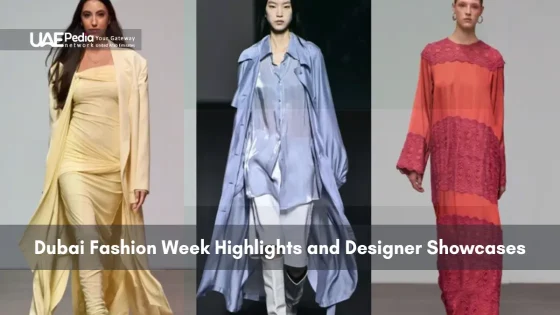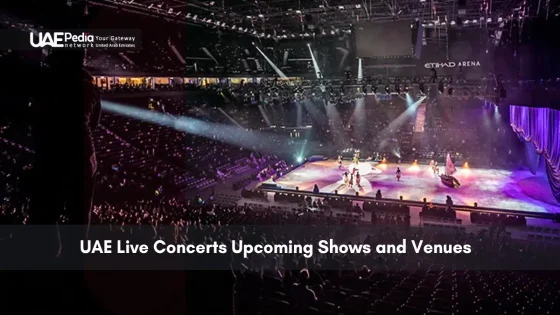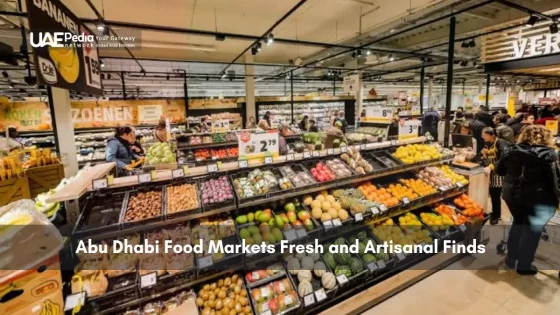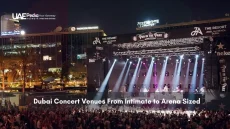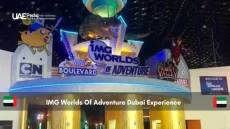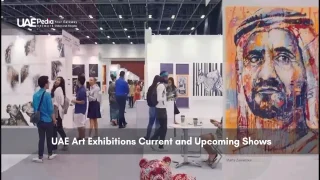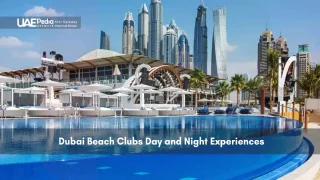Did you know a Middle Eastern city now rivals the “Big Four” fashion capitals? While New York and Paris dominate headlines, a fresh hub for cutting-edge design has emerged—one where desert sands meet runway innovation. This event isn’t just local buzz; it’s officially recognized as a global platform shaping trends from Milan to Tokyo.
What makes this gathering unique? It’s where rising stars debut alongside industry giants, all backed by partnerships like the Arab Fashion Council and Dubai Design District. Think bold textiles inspired by Bedouin craftsmanship paired with AI-driven fabric tech—this is where tradition sparks tomorrow’s style.
You’ll find no velvet ropes here. Instead, expect open-air shows under palm-lined skies and pop-up exhibits in avant-garde spaces. The energy mirrors the city itself: ambitious, inclusive, and unafraid to blend heritage with hyper-modernity.
- Discover why this event ranks among the world’s top five fashion weeks
- Explore how emerging designers share spotlights with established names
- Learn how strategic collaborations fuel its rapid growth
- Uncover the cultural-meets-contemporary DNA defining its showcases
Overview and Historical Background
Imagine a fashion event born from Bedouin textile traditions and turbocharged by 21st-century ambition. That’s the origin story of Dubai’s style gathering, which sprouted from the earlier Arab Fashion Week concept in 2015 before blossoming into its current form in 2023. This isn’t just another catwalk circus—it’s a calculated fusion of heritage and hustle.
Seeds of a Style Revolution
When the Arab Fashion Council hit “launch” on February 7, 2023, they weren’t starting from scratch. Eight years of Arab Fashion Week had already laid groundwork, blending regional craftsmanship with international appeal. Partnering with Dubai Design District (d3) gave creators cutting-edge studios alongside traditional souk inspiration—think 3D-printed abayas meeting hand-embroidered silks.
The Power Players Behind the Curtain
What rockets a local showcase into the global top five? Strategic alliances. The Council’s partnership with d3 provides infrastructure, while clever scheduling—autumn shows in March, spring collections in October—syncs perfectly with New York and Milan timelines. “We’re not competing,” one organizer notes, “We’re completing the global fashion conversation.”
This calendar flip allows buyers to hop seamlessly from Manhattan runways to Gulf innovations. It’s smart positioning: same industry players, fresh perspectives under Arabian skies. Now international editors pencil in Dubai dates alongside Paris—proof that cultural roots can fuel worldwide influence.
Designer Highlights and International Impact
What happens when a Lebanese couturier’s crystal-encrusted gowns share a runway with Dutch 3D-printed marvels? You get the electric cocktail of creativity that defines this global style summit. Here, fresh voices like Dima Ayad—celebrated for her curve-inclusive abayas—trade spotlight moments with legends like Michael Cinco, whose bridal collections turn fabric into liquid gold.
Spotlight on Emerging and Established Talent
Paolo Sebastian’s ethereal bridal wear floated down the catwalk like desert mirages, while Iris van Herpen’s biomechanical designs proved science fiction belongs in style conversations. “This platform lets us test ideas that would terrify Parisian editors,” laughed one rising designer backstage. Local hero Dima Ayad put it bluntly: “If your collection doesn’t speak to 50 nationalities, you’re not trying.”
International Diversity and Cultural Influence
Seventeen countries’ aesthetics collided beautifully—Moroccan tile patterns on New York-tailored blazers, Japanese origami folds in Emirati silhouettes. When Moschino debuted Bedouin-inspired metallic headpieces, it wasn’t appropriation—it was collaboration, with artisans from Al Ain co-designing. Think of it as the United Nations of style, where every stitch tells a migration story.
This cultural cross-pollination reshapes what “luxury” means. As one buyer noted: “We flew here for the spectacle, but stayed for the substance.” From Seoul’s streetwear rebels to Milan’s tailoring maestros, the event proves great design needs no translator.
Dubai fashion week: Schedule and Participating Brands
Planning your front-row experience? The AW 2025 schedule transforms the city into a six-day style odyssey—where sunrise shows meet midnight reveals. From Paolo Sebastian’s debut to Manish Malhotra’s grand finale, every hour pulses with discovery.
In-Depth Calendar for AW 2025
Mark these dates: February 1-6 unfolds like a treasure map for trend hunters. Day one kicks off with Zeena Zaki’s 9 AM metallic knits, while Toton’s 3 PM bamboo-linen fusion closes Sunday. Midweek gems? Don’t miss Manel’s AI-generated prints (Feb 3, 6:30 PM) or Les Benjamins’ streetwear-meets-souk collection (Feb 5, 8 PM).
Featured Collections and Runway Moments
Paolo Sebastian’s Tuesday debut promises floating chiffon gowns inspired by desert mirages. “We’re blending Australian botanical dyes with Emirati silhouette studies,” his team reveals. Thursday’s highlight? A collaborative show where Milan’s Daniela Cortese reimagines the abaya with LED embroidery.
Collaborative and Innovative Fashion Trends
This year’s secret sauce: partnerships. Seoul’s Blindness teams up with Abu Dhabi weavers for reversible outerwear, while London’s Ashish Gupta splices Hindi pop motifs into sportswear. The grand finale? Manish Malhotra’s Saturday spectacle fusing Bollywood drama with Bedouin jewelry techniques—a 10 PM showstopper you’ll replay for weeks.
Pro tip: Sync your alerts using the official schedule—it’s your backstage pass to seamless style-hopping across venues.
Looking Forward: Shaping the Future of Fashion
The runway lights may dim, but the creative sparks ignited here will shape closets worldwide for seasons to come. This fashion week isn’t just predicting trends—it’s engineering them through biodegradable textiles and AI-generated patterns that adapt to climate shifts. Expect future editions to pioneer solar-reactive fabrics and zero-waste production methods, turning sustainability into runway spectacle.
Strategic partnerships will fuel this evolution. Tech giants are already courting Arab fashion councils to co-create smart garments—think abayas with embedded health sensors or kanduras that purify air. Emerging designers from Lagos to Jakarta now view this event as their launchpad, drawn by its unique blend of heritage craftsmanship and digital experimentation.
Cultural storytelling remains central. Upcoming collections will likely fuse Bedouin weaving techniques with augmented reality displays—imagine tracing a garment’s artisan journey via smartphone. The calendar’s growing influence also hints at reshuffled industry timelines, with buyers increasingly prioritizing Gulf innovations alongside Parisian classics.
One thing’s certain: this gathering redefines what a global fashion hub looks like. As boundaries between physical and digital design blur, we’ll all dress a little more boldly. Keep your eyes peeled—the next style revolution starts here.
Unlike New York or Paris Fashion Weeks, this event uniquely blends Arab heritage with futuristic innovation. Think Bedouin-inspired textiles alongside AI-designed wearables—all backed by the Arab Fashion Council’s regional expertise.
Absolutely! While invite-only access applies to certain VIP showcases, many events during the October 19-23, 2025 dates are open to the public. Grab tickets early via the official calendar—they sell faster than karak at a Friday brunch.
Designers like Emergency Room and Arwa Al Banawi are pushing recycled fabrics and zero-waste patterns. Look for solar-powered accessory lines and carbon-neutral runway setups—proof that style and eco-consciousness can walk hand in hand.
You’ll spot abaya innovators like Hessa Falasi and The Giving Movement redefining modesty with tech fabrics and bold silhouettes. Over 40% of AW 2025 collections integrate cultural modesty principles with global trends.
The Arab Fashion Council’s “Designer Lab” program scouts regional talent yearly. Submit portfolios by March 1 via their portal—finalists gain mentorship, funding, and coveted runway slots. Past winners now stock at Bloomingdale’s Dubai!
Use the RTA Dubai app to hop between Dubai Design District shows and Downtown Dubai pop-ups. Metro Red Line stops at Burj Khalifa/Dubai Mall Station—just a 10-minute walk from most catwalks. Pro tip: book Careem rides post-9 PM to avoid peak rates.
